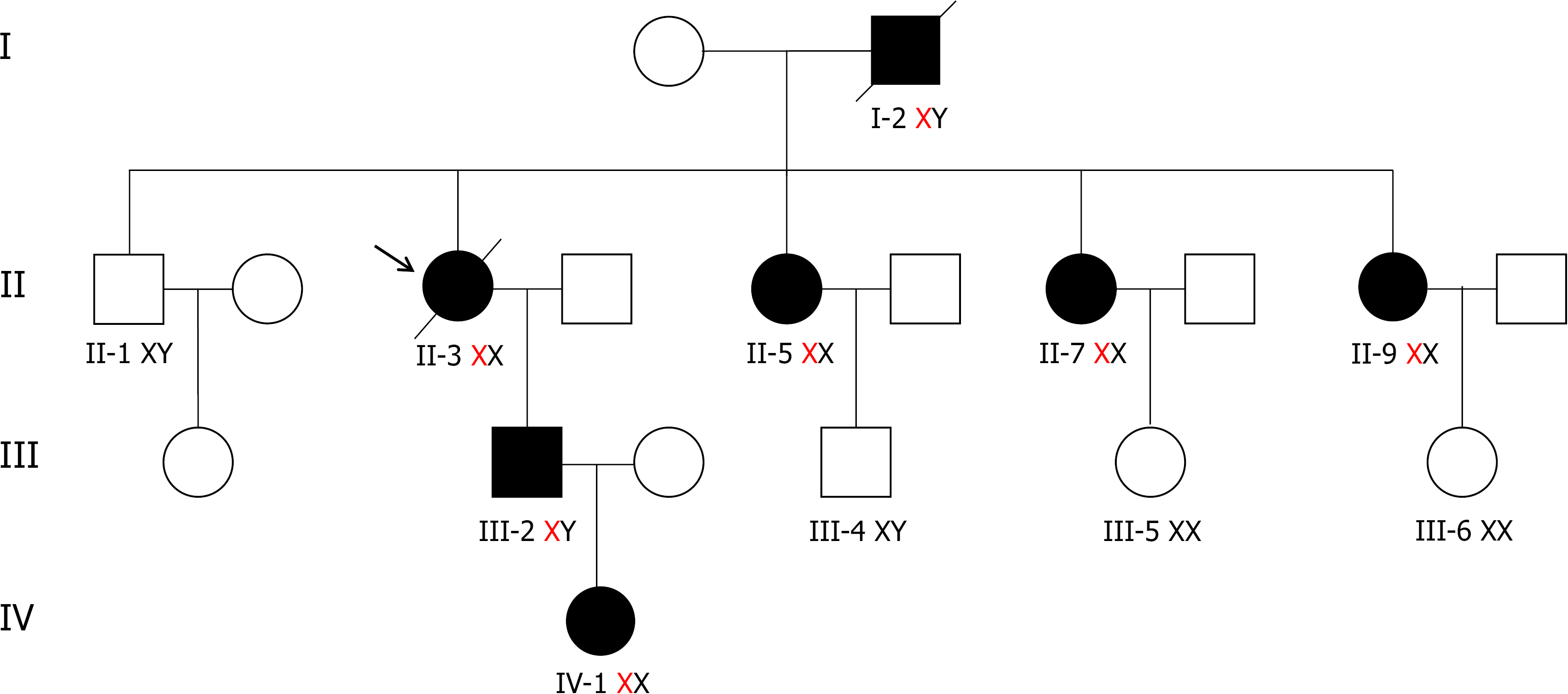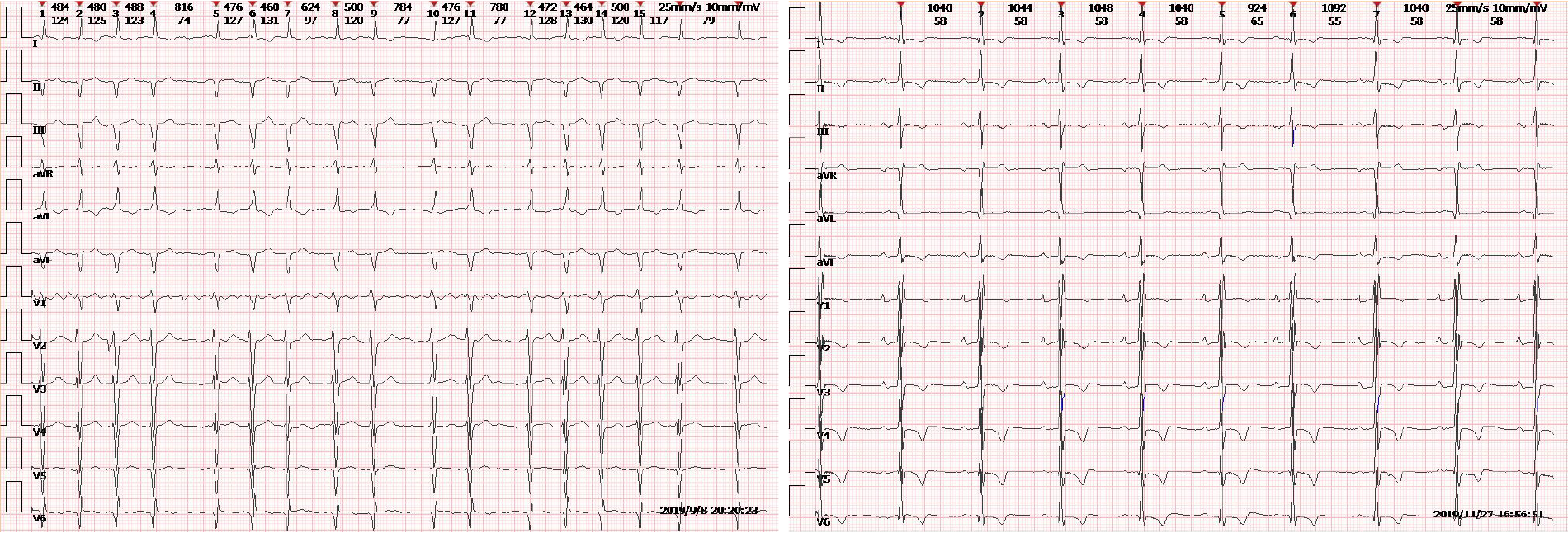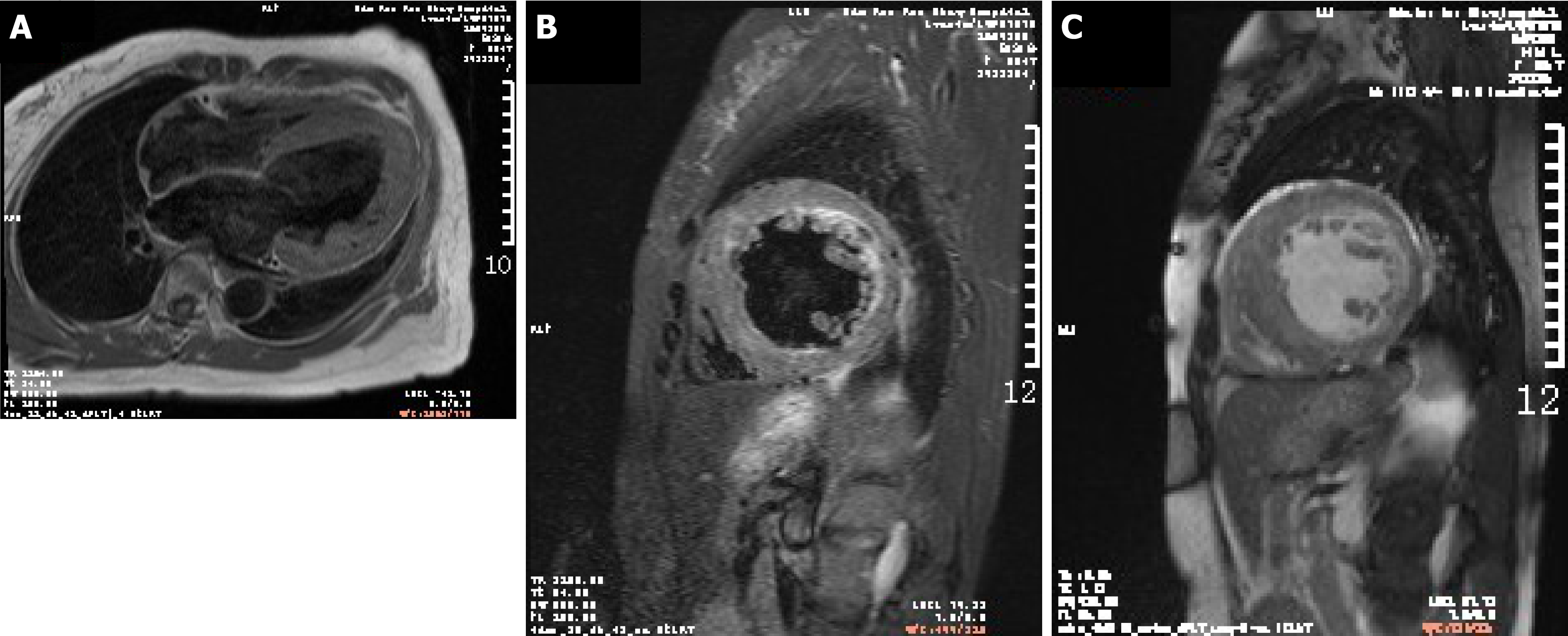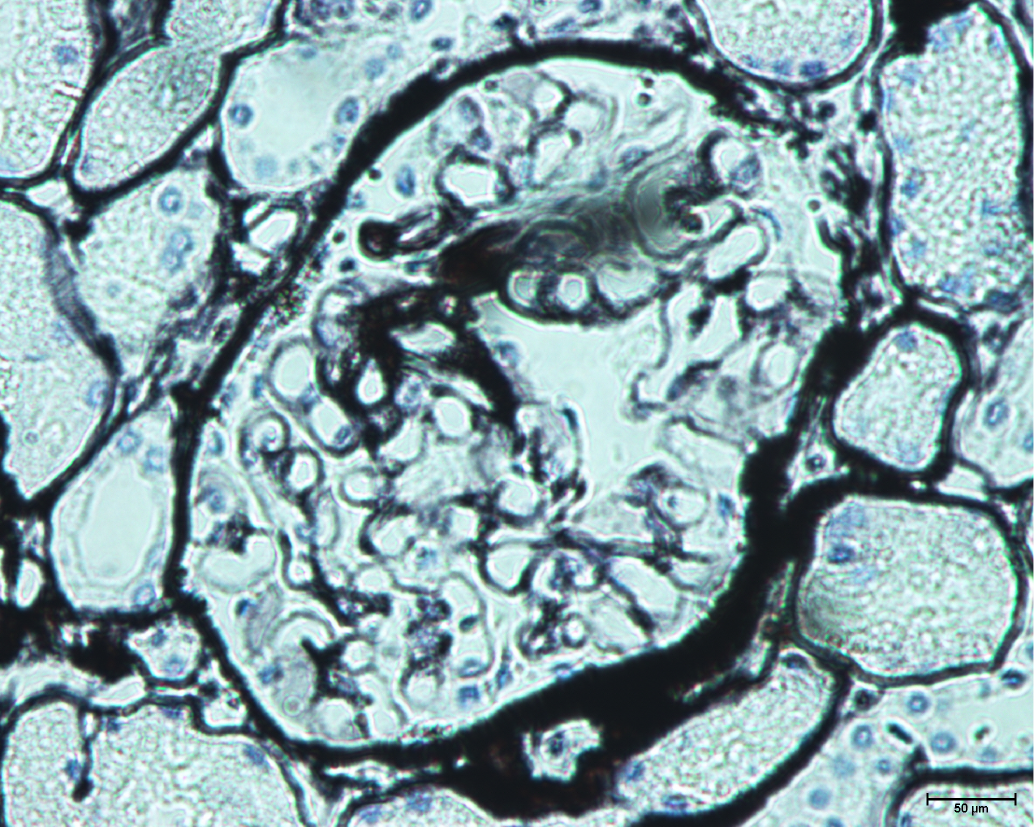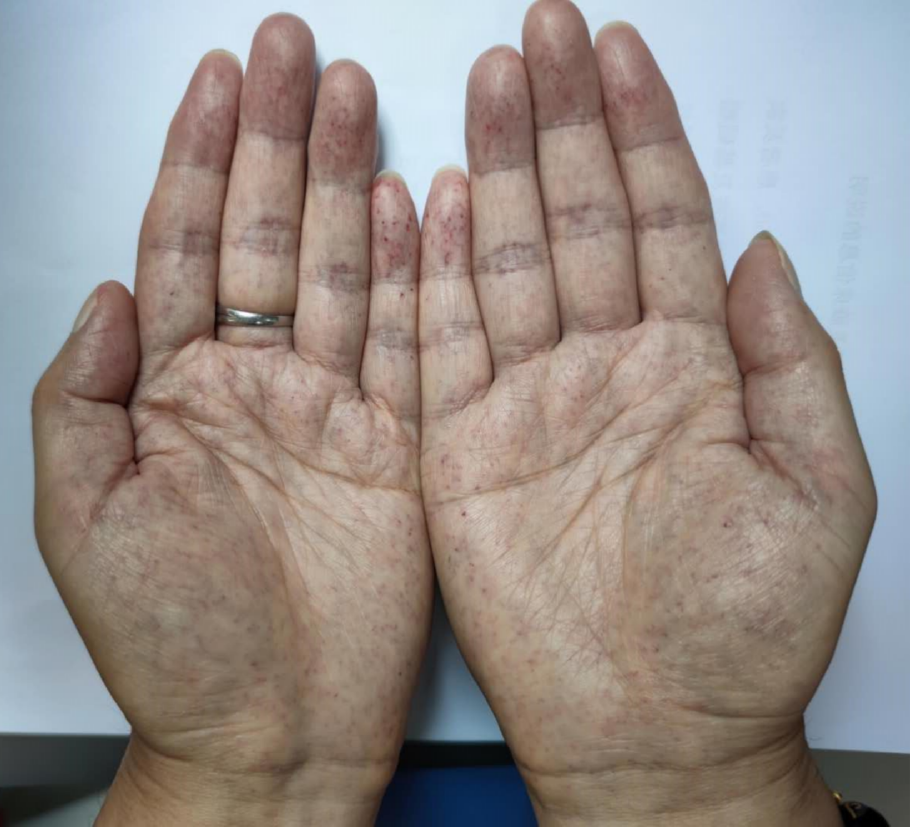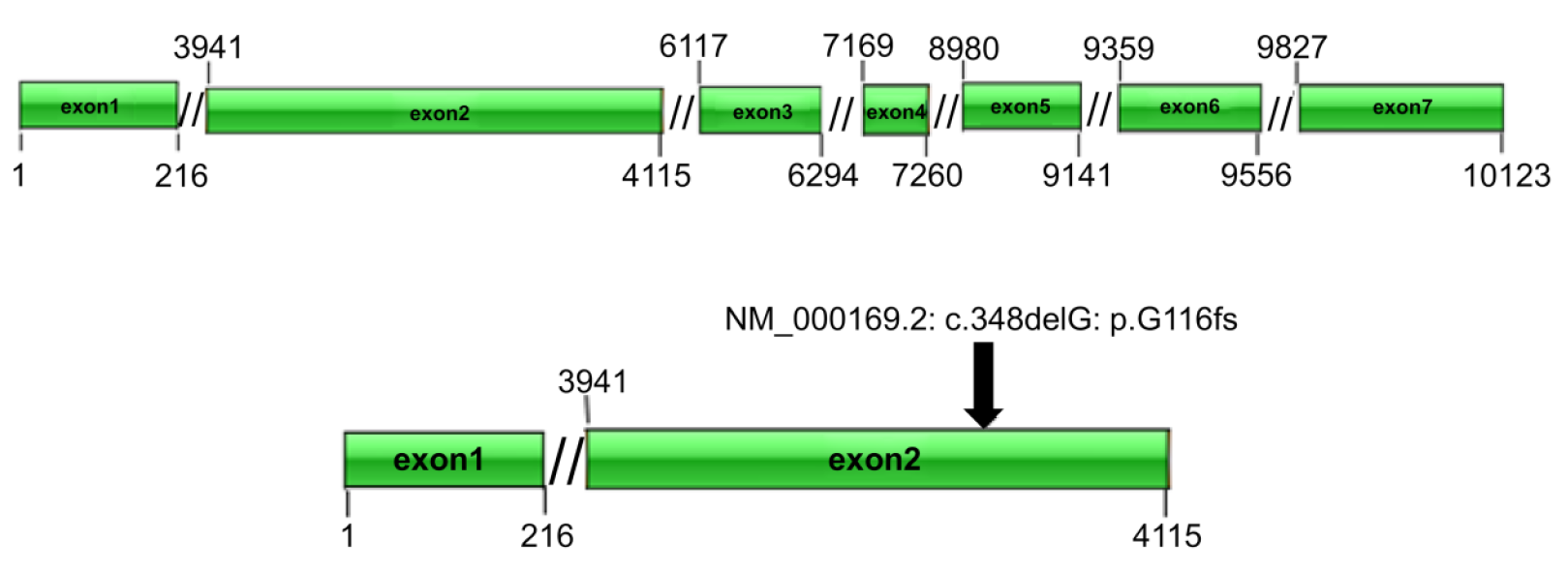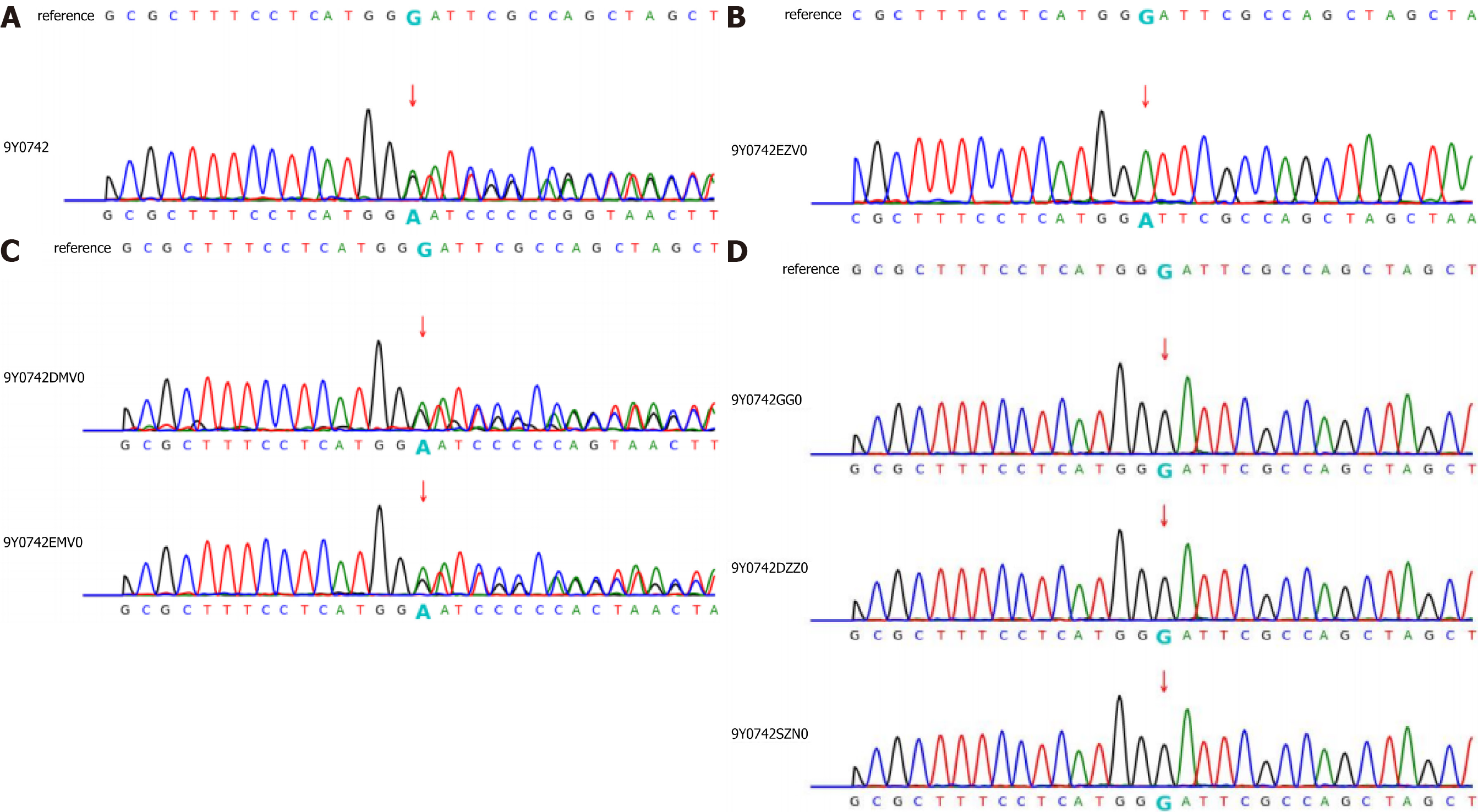Copyright
©The Author(s) 2022.
World J Clin Cases. Jan 21, 2022; 10(3): 1067-1076
Published online Jan 21, 2022. doi: 10.12998/wjcc.v10.i3.1067
Published online Jan 21, 2022. doi: 10.12998/wjcc.v10.i3.1067
Figure 1 Family tree.
The four-generation pedigree with the mutation p.G116fs in the GLA gene is shown. Roman numerals indicate generations; individuals within a generation are numbered from left to right. The proband (II-3) is denoted with an arrow. Oblique lines indicate patients who are already dead. Filled squares and circles indicate male and female patients, respectively. Black color represents patients with Fabry disease (FD), which were confirmed by genetic analysis. The proband’s father (I-2) suffered from cardiovascular disease and stroke. The proband (II-3) died of end-stage heart failure. The proband’s son (III-2) started enzyme replacement therapy in July 2020. The proband’s granddaughter (IV-1) was born before her father (III-2) was diagnosed with FD.
Figure 2 Electrocardiogram of the patient indicating atrial fibrillation rhythm.
Pathological Q waves in inferior and lateral leads, and T wave inversion are shown.
Figure 3 Cardiac magnetic resonance imaging showed patchy enhancement of interventricular septum and left ventricular anterior wall hypertrophy.
Delayed enhancement suggested the formation of a large number of fibrous scars in left ventricular hypertrophy.
Figure 4 Light microscopy of renal biopsy (periodic acid-Schiff staining, 400 ×) showing membranous nephropathy.
Heterogeneous thickening of the glomerular capillary basement membrane is visible.
Figure 5 Angiokeratoma on both hands of the proband’s son (III-2).
Figure 6 Schematic diagram of NM_000169.
2: c.348delG:p.G116fs.
Figure 7 Protein structure prediction of the normal and mutated galactosidase gene.
Figure 8 Conventional sequencing results for four of the family members.
(A) The proband (II-3), (B) Proband’ son (III-2), and (C) Proband’ two sisters (II-5, II-7) showing the same mutation; (D) Proband's elder brother (II-1), eldest nephew (III-4), and the third niece (III-6) showing no mutant gene.
- Citation: Fu AY, Jin QZ, Sun YX. Novel α-galactosidase A gene mutation in a Chinese Fabry disease family: A case report. World J Clin Cases 2022; 10(3): 1067-1076
- URL: https://www.wjgnet.com/2307-8960/full/v10/i3/1067.htm
- DOI: https://dx.doi.org/10.12998/wjcc.v10.i3.1067









